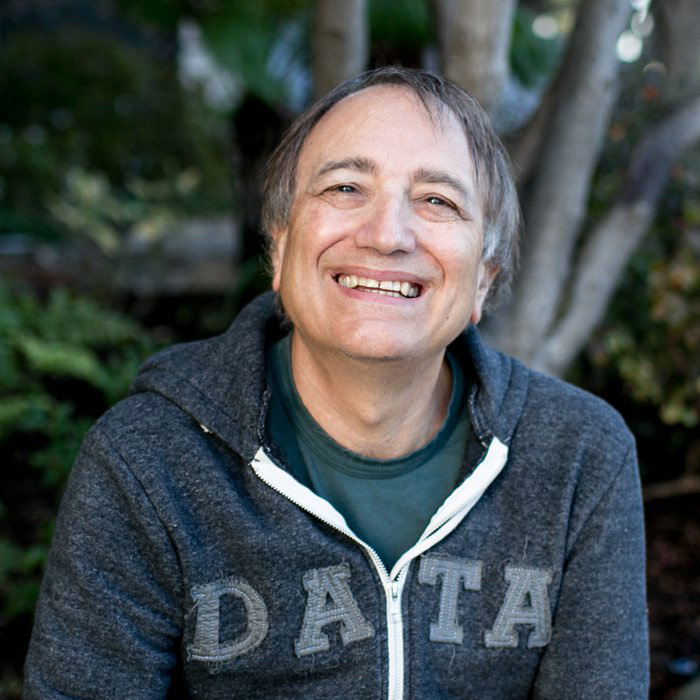SIGGRAPH 1993 Computer Graphics Achievement Award: Hanrahan
Awardee(s):
Award:
-
Computer Graphics Achievement Award
Description:
The SIGGRAPH Computer Graphics Achievement Award is presented to Dr. Patrick M. Hanrahan for his contributions to rendering systems and algorithms. We recognize his research and publications on volume rendering, ray tracing, and radiosity algorithms as well as his role as the architect of the RenderMan interface.
Hanrahan started his career in physics and biology at the University of Wisconsin. He received a BS. Degree in Nuclear Engineering, graduating first in class of 1977. While at Wisconsin he worked in the Department of Zoology developing computer models of the motornervous system of the nematode Ascaris. During this period he became interested in models of shape and the potential of the computer for visualizing the results of simulations. He quickly recognized the importance of modeling and did some work on creating models from edge-vertex graphs (SIGGRAPH ’82). Realizing that he needed to know more, he inquired by letter about a summer position at the New York Institute of Technology (NYIT) Computer Graphics Laboratory. His letter was persuasive enough to land him a spot for the summer that quickly turned into a full-time staff position. There he was initially responsible for modeling and animation software and eventually was the Director of the 3D Animation Systems Group. While at NYIT, Hanrahan published papers on ray tracing algebraic surfaces (’83) and “beam tracing” polygonal surfaces (’84).
Hanrahan returned to the University of Wisconsin to finish his dissertation, which ended up having much more to do with graphics than biology, and received a Ph.D. in Biophysics in 1985. After a short stint at Digital’s Systems Research Lab in Palo Alto, he accepted a position at Pixar in 1986 shortly after Pixar separated from Lucasfilm. He collaborated with Bob Drebin and Loren Carpenter in developing the first volume rendering algorithms for the Pixar image computer (’88). These algorithms were quite different from earlier approaches in that they created images directly from three-dimensional arrays without the intermediate steps of converting to standard surface representations such as polygons. Volume rendering is now a major component of scientific and medical visualization systems.
He later joined the REYES machine group and was responsible for the rendering software and the graphics architecture. The rendering interface of the system evolved into the RenderMan standard that now is widely used in the movie industry. In particular Hanrahan was the principal architect of the RenderMan Interface (Pixar ’88). His paper with Jim Lawson describes one of the more interesting aspects of the system, the shading language, which allows users to extend the capabilities of the rendering system by defining new procedurally defined appearances.
Since 1989 Hanrahan has been on the Faculty of the Computer Science Department at Princeton University, where he became tenured as Associate Professor in 1991. His goal since returning to academia is to put computer graphics on a sound mathematical and scientific foundation. Placed in an environment where publication is more than encouraged, Hanrahan’s publications have blossomed. He has been arguably the most prolific single contributor to SIGGRAPH in the last few years. His name appears on no fewer than five papers in this year’s proceedings. He is also extremely interested in computer graphics education and has won three university teaching awards since joining Princeton.
Recently Hanrahan made important contributions to accelerating radiosity computations through hierarchical methods (91a, 93c). He has continued his work in volume rendering (91b, 93b). He has contributed pioneering work for rendering caustics (92), for investigating wavelets for radiosity (93d), and determining global visibility (93e). He has discovered a fundamental closed form result for the radiosity form factor between two polygons (93a). In addition to these efforts he has also found time to contribute to texturing through direct manipulation (90a), to develop a shading language (90b), and to keep up with rendering architectures for parallel machines.
This extraordinarily high level of productivity is due in part to Hanrahan’s ability to find and to cooperate with a wide variety of collaborators as well as his own creativity. In addition to the students at Princeton, he has managed to work with colleagues around the world in both academia and industry. Furthermore, the work just described has an element of scholarship to it that has often been elusive in computer graphics. The fast-moving nature of the field often makes work more than a few years old seem out of date. Hanrahan has been one of those who goes back to the basics both inside computer graphics and in the many fields that can contribute.
Hanrahan’s work has a significant ongoing effect on computer graphics in a wide variety of rendering applications, in the high quality of his scholarship, and especially in the force of his ideas. His influence on computer graphics is still accelerating, leaving us eagerly anticipating his future achievements as well as honoring those of the past.
Source:
- ACM SIGGRAPH Press Release, 1993





